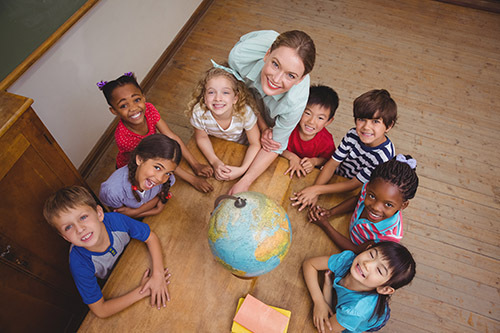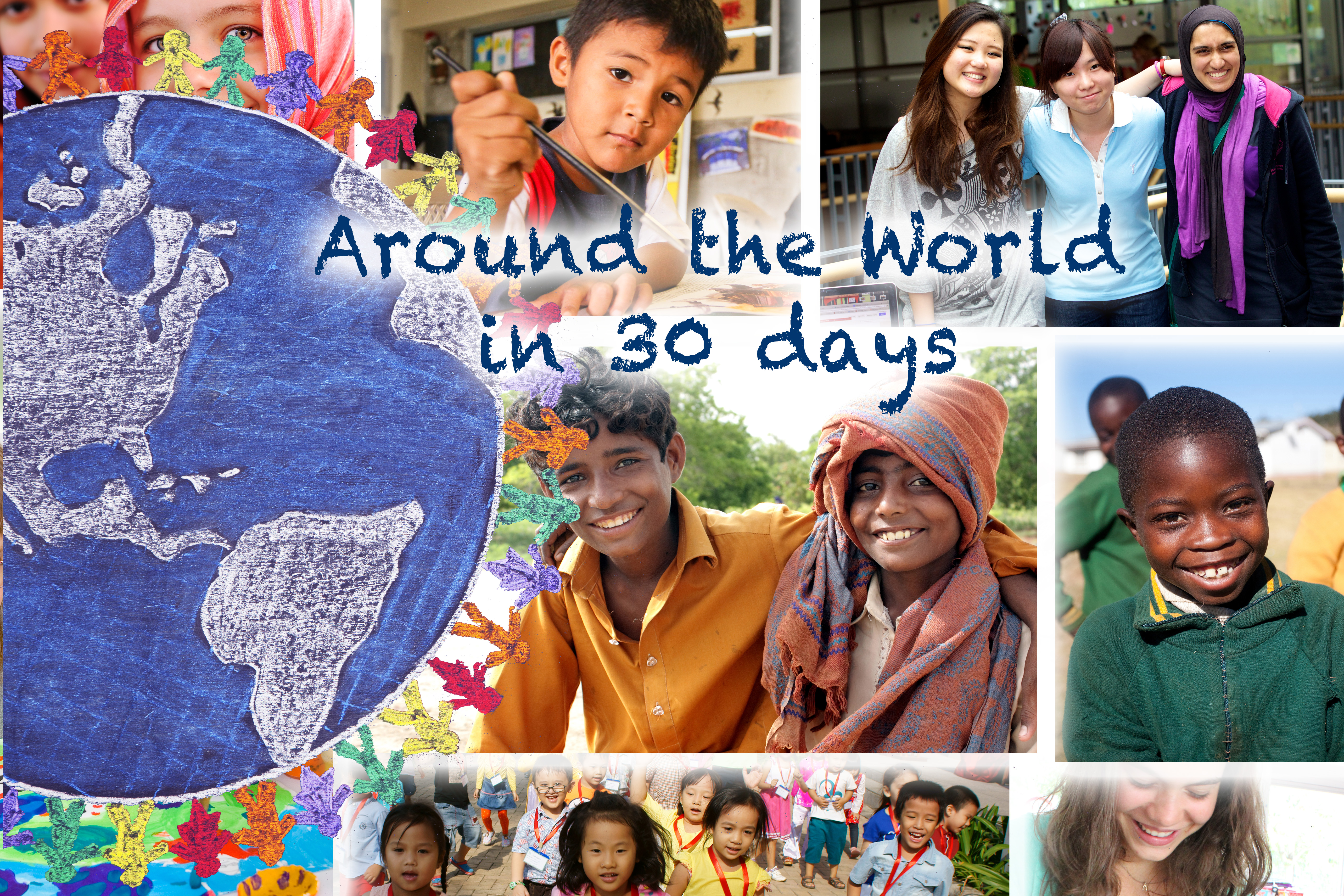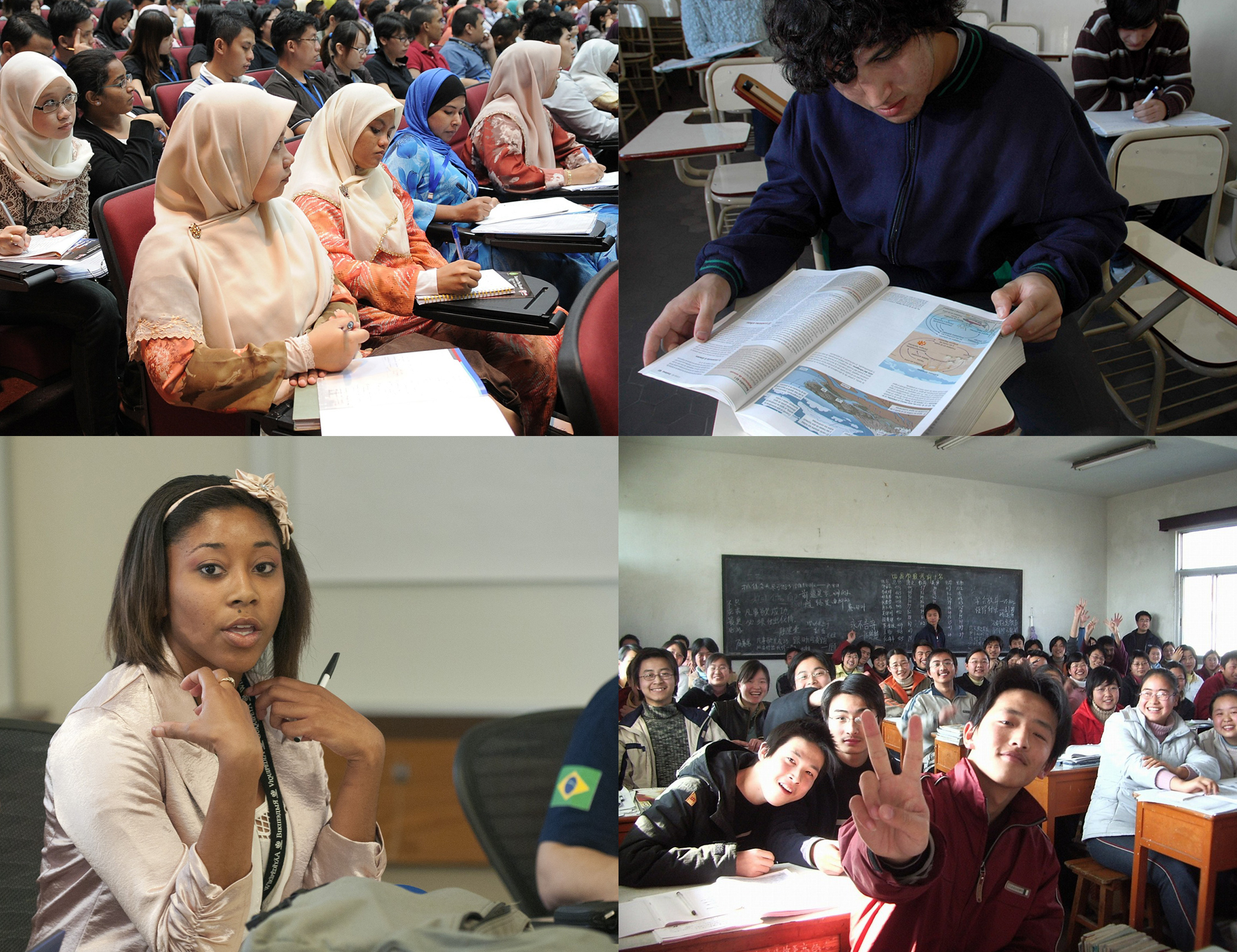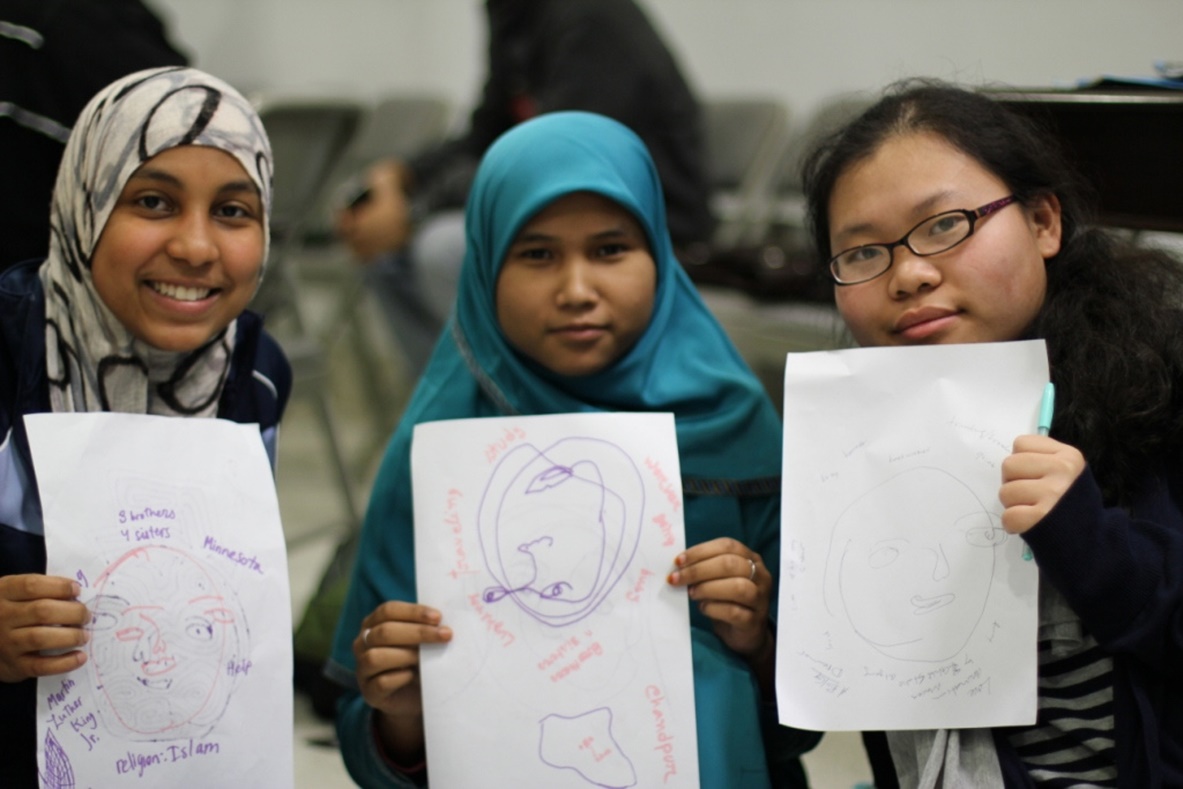
Teaching in a Global Landscape – Mindful Multiculturalism in Today’s Classroom was the timely theme of the recent Twitter Chat hosted by Edmodo (@edmodo) and The Global Search for Education (@CMRubinWorld). Featured guests Dr. William Gaudelli (Department Chair and Associate Professor, Teachers College, Université de Columbia), Jessica Kehayes (Directeur Exécutif, Éducation, Asia Society), and Dana Mortenson (Co-Founder and Executive Director, Mondiale Savvy) joined teachers and tweeters from all over the world to synthesize research, insights and examples of best practices in fostering global consciousness to support the increasingly diverse student populations present in their classrooms.
For those who missed #EdmodoGS4Echat Live, it’s our pleasure to welcome back to La recherche globale pour l'éducation our featured guests, Facture, Jessica and Dana, to share the highlights of what we learned.
What does Multiculturalism in education mean to you? #EdmodoGS4Echat
Dana: Multiculturalism is a critical and core element of building more future-facing globally competent environments. As demography shifts and migration patterns make classrooms more ethnically and culturally diverse, the global knowledge economy demands graduates with nuanced, global skills. Here’s our global competence definition: http://bit.ly/1QQ9H15
Facture: Being open to others – seeing and listening to them – with a willingness to change your thinking and doing as a result.
Jessica: As one of our students said more eloquently than I could, global competence teaches us about the beauty and the ugliness of the world and prepares us to be not only informed but also empathetic: http://bit.ly/1R01Esn

How can schools be better prepared to suit multicultural classrooms? #EdmodoGS4Echat
Dana: It’s important for schools to begin by setting a tone that values and leverages diversity as an asset, across all aspects of teaching and learning. This cannot be an ‘add on’ or a checklist, but rather an ongoing effort marked by continuous learning and reflection. Students coming into school with richly diverse and varied life experience can then be positioned for success as real contributors to engaging curriculum and discourse, where their own narratives, ideas and experiences are directly leveraged in the process of learning about, and with, the world. The principal at one of our outstanding school partners shares her perspective on how this works: http://bit.ly/1S8FBV1
Facture: Encourage preservice and beginning and veteran teachers to leave their comfort zone, understand their social positions and dig-down into who they are: http://bit.ly/1Su44VB
Teachers grasp of how they are socially positioned in the world – by race/ethnicity, classe, sexe, gender-orientation, sexual orientation, religion, physical ability to name a few – invite them to help students think similarly.
Jessica: Schools are increasingly developing teacher-leader roles, equipping them to lead professional conversations between colleagues, and building in time for collaborative work between teachers. There are also many organizations that work directly with schools and districts to support global competence training, strengthening the capacities the schools have in place.
What are the ways that teachers can foster independent thinking while still promoting diverse learning styles? #EdmodoGS4Echat
Facture: Use the barometer method to encourage divergent views about a topic and develop personalized learning that has a strong social learning component.
Jessica: Teachers can: (1) create an environment where students feel safe bringing their culture, perspective, background and diversity into the classroom; (2) allow for student choice and voice in their own learning; et (3) show students the diversity of the community and the world around them to encourage thinking. Global projects, with opportunities for student choice, are a great option.
Dana: Be sensitive to individualism and collectivism in a learning environment, and how you engage learners for growth: http://bit.ly/21DsluR

What role does technology play in creating a better multicultural classroom? #EdmodoGS4Echat
Facture: Encourage kids to talk about limits/benefits of using media-connectivity, or is connected always ‘connected’? Check out “Is FB making us lonely?” by Stephen Marche: http://theatln.tc/1hALSaV
Jessica: Technology allows international exchange without the barriers of cost, administration, and sometimes prohibitive travel visas. Start small and grow. Simulations, video chats or using social media for discussion or to connect to expert resources outside of your immediate school community are all easy ways to get started. Connecting to world events is often a logical way to go and there are many other opportunities to plug in: museum cultural visits, documentary film making and game design all provide ways for engaged global learning. More tips: http://bit.ly/1nrGcVK
Dana: A student who engages with others from around the world, researches issues from multiple perspectives online, then develops ideas for addressing those issues, now has the capacity to share those ideas and collaborate with people anywhere. Tech is an incredibly powerful tool. Three organizations I admire doing this work are @global_nomads @Tonyblair_TBFF @iEARNUSA.
How can educational systems better address prior learning and transferability of skills? #EdmodoGS4Echat
Facture: Teaching students to inquire is the ultimate transferable skill – it’s what makes us human. Learning how to learn is the core of being globally competent: http://bit.ly/21SZp5I
Jessica: Education systems have an opportunity to allow students to gain credit for knowledge gained outside of formal education and many are making big strides in this area. Par exemple, the state of Washington in the U.S has a seal of biliteracy to recognize the language learning of students, with great benefit for immigrant learners, and many other states are working to implement a similar model. Competency-based credit is a huge opportunity for out-of-school learning, community partnerships: http://bit.ly/1DyaxrU

What are some tips for teaching mindfulness around social, émotif, and cultural diversity? #EdmodoGS4Echat
Jessica: Start locally and look for diversity in your community–parents, entreprises, partenaires–and use them as an asset. Give students the choice to engage in projects that interest them, or link another community, to build empathy and relevance. Look at news and images in other countries and ask students to consciously take on new perspectives.
Dana: Here are some specific suggestions for how schools can prepare their students: http://edut.to/1zWHrPR
How can a multicultural classroom help students see cultural differences as positive and necessary for a healthy community? #EdmodoGS4Echat
Jessica: The more we can promote understanding and perspective-taking, and encourage explanation of your own thinking while respectfully hearing others, the more opportunity there is for new thinking to emerge and communities to be strengthened. Building relationships with the community can and should start early, promoting all members of our society as important voices, including our youngest. A case study of an afterschool program in Seattle: http://bit.ly/1TmK60h
Dana: Here’s an example of how a group of teachers adjusted grading to measure what matters: http://bit.ly/1RzWtT3
Many thanks to our Featured Guests for their insights and resources. Check out the entire chat on #EdmodoGS4Echat
Fondé en 2008 and used by more than 370,000 schools in over 190 countries with 60 millions d'utilisateurs, Edmodo was designed to protect the privacy and security of students and teachers by providing a closed, private platform in which they can connect, share content, and leverage educational apps to augment in-classroom learning.
(All photos are courtesy of Shutterstock and CMRubinworld)


Rejoignez-moi et leaders d'opinion de renommée mondiale dont Sir Michael Barber (Royaume-Uni), Dr. Michael Bloquer (États-Unis), Dr. Leon Botstein (États-Unis), Professeur Clay Christensen (États-Unis), Dr. Linda Darling-Hammond (États-Unis), Dr. MadhavChavan (Inde), Le professeur Michael Fullan (Canada), Professeur Howard Gardner (États-Unis), Professeur Andy Hargreaves (États-Unis), Professeur Yvonne Hellman (Pays-Bas), Professeur Kristin Helstad (Norvège), Jean Hendrickson (États-Unis), Professeur Rose Hipkins (Nouvelle-Zélande), Professeur Cornelia Hoogland (Canada), Honorable Jeff Johnson (Canada), Mme. Chantal Kaufmann (Belgique), Dr. EijaKauppinen (Finlande), Le secrétaire d'Etat TapioKosunen (Finlande), Professor Dominique Lafontaine (Belgique), Professeur Hugh Lauder (Royaume-Uni), Seigneur Ken Macdonald (Royaume-Uni), Professeur Geoff Masters (Australie), Professeur Barry McGaw (Australie), Shiv Nadar (Inde), Professeur R. Natarajan (Inde), Dr. PAK NG (Singapour), Dr. Denise Pape (États-Unis), Sridhar Rajagopalan (Inde), Dr. Diane Ravitch (États-Unis), Richard Wilson Riley (États-Unis), Sir Ken Robinson (Royaume-Uni), Professeur Pasi Sahlberg (Finlande), Professeur Manabu Sato (Japon), Andreas Schleicher (PISA, OCDE), Dr. Anthony Seldon (Royaume-Uni), Dr. David Shaffer (États-Unis), Dr. Kirsten immersive, (Norvège), Chancelier Stephen Spahn (États-Unis), Yves Thézé (LyceeFrancais États-Unis), Professeur Charles Ungerleider (Canada), Professeur Tony Wagner (États-Unis), Sir David Watson (Royaume-Uni), Professeur Dylan Wiliam (Royaume-Uni), Dr. Mark Wormald (Royaume-Uni), Professeur Theo Wubbels (Pays-Bas), Professeur Michael Young (Royaume-Uni), et le professeur Zhang Minxuan (Chine) alors qu'ils explorent les grandes questions d'éducation de l'image que toutes les nations doivent faire face aujourd'hui.
La recherche globale pour l'éducation communautaire page
C. M. Rubin est l'auteur de deux séries en ligne largement lecture pour lequel elle a reçu une 2011 Upton Sinclair prix, “La recherche globale pour l'éducation” et “Comment allons-nous savoir?” Elle est également l'auteur de trois livres à succès, Y compris The Real Alice au pays des merveilles, est l'éditeur de CMRubinWorld, et est une fondation perturbateurs Fellow.
Suivez C. M. Rubin sur Twitter: www.twitter.com/@cmrubinworld





Commentaires récents